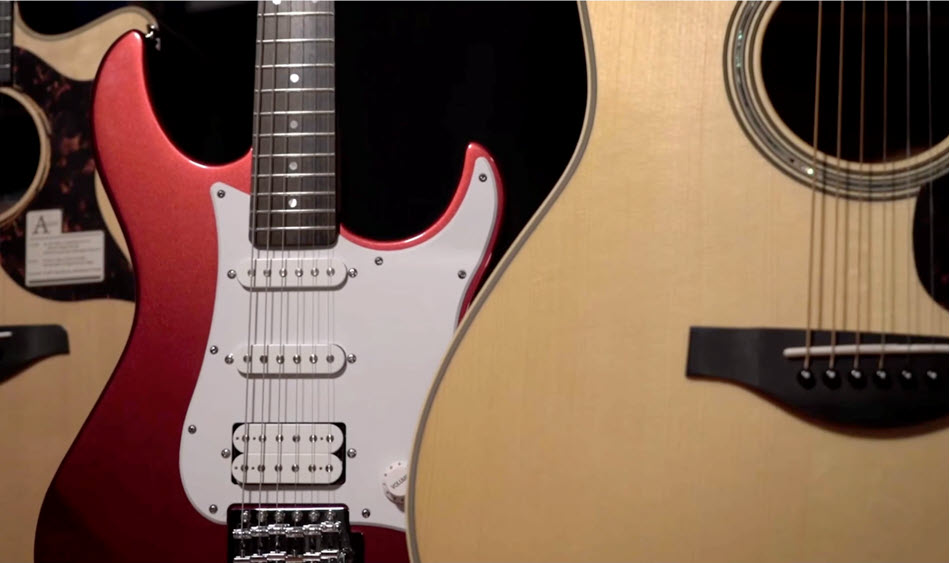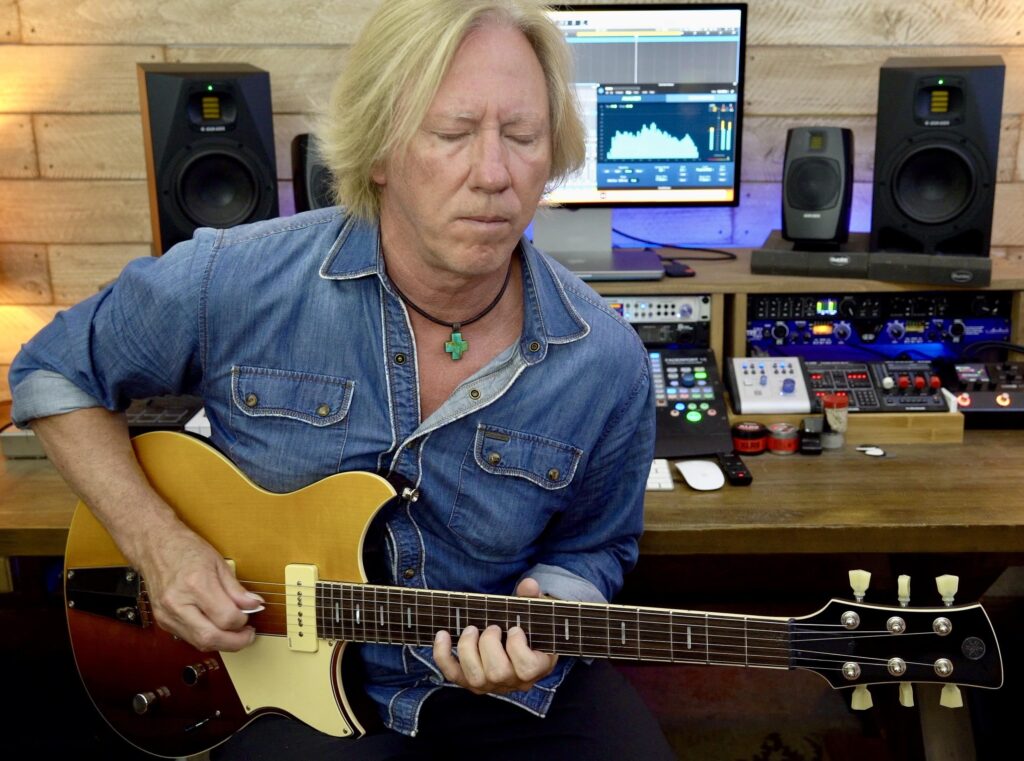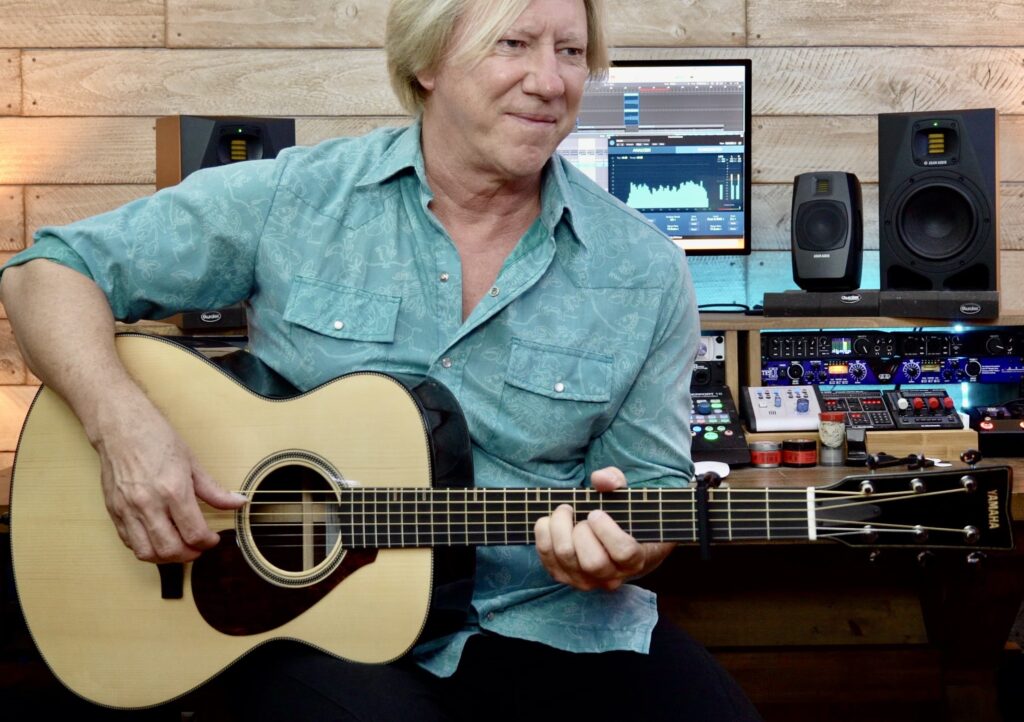Seven Ways to Become a Better Guitar Player
Setting your sights on higher ground.
Regardless of the level of playing you’ve attained so far, there will always be periods of time when you feel like your progression as a musician is on hold, or that you’re simply coasting on the same plateau of achievement.
This may be particularly frustrating for the beginner who’s passionately trying hard to sound like a professional in a short space of time. But, unless you are exceptionally gifted, improvement will take time … and quite often, a lot of study and hard work.
In addition, you can’t buy experience, so every challenge you take on — regardless of its outcome — becomes a notch in the fretboard that you can use to attain seasoned-guitarist status. This is called “paying your dues.”
That said, there are some simple techniques and approaches you can implement to elevate your playing rapidly. In this posting, we’ll explore seven of those ideas — ways of getting extra “mileage” out of what you already know.
1. SET YOUR INTENTION
I’m a huge advocate of setting your intention before every practice session. In other words, decide what you are going to practice before you even pick up your guitar. After all, you can only arrive at a destination if there is a pathway towards it, a roadmap of sorts.
One way to implement this plan is to make a list for each practice session. Here’s an example.
Today’s practice routine is:
-
- Five minutes playing the seven chords of the C major scale in sequence. As you are playing them, name all seven chords and the notes in each one.
- Five minutes playing one major scale pattern. This time, name and sing the notes while playing them.
- Five minutes creating a chord progression from the seven major scale chords, then sing a melody over the chord progression and learn the melody on the guitar.
Obviously, you’d tailor this sample routine to fit your own personal goals. The important thing to keep in mind is that when you set your intentions and stick to them, you get results. Take this initiative daily, and you’ll progress faster than you could have ever imagined.
2. EXPAND ON SIMPLE TONALITIES
In general, guitar players learn chords in open position (i.e., those that contain one or more unfretted strings) first, but rarely expand upon the values of those shapes in other positions … or manipulate them by adding or subtracting fingers to and from those initial shapes.
For example, a C major chord becomes a C major seventh (Cma7) chord by simply lifting your index finger off the B string, as shown in the illustration below. It becomes a Cadd2 chord by placing your pinky on the third fret of the second string, and it becomes a C6/9 by moving your finger from the fourth string on the second fret to the third string on that same fret (leaving the D string open):
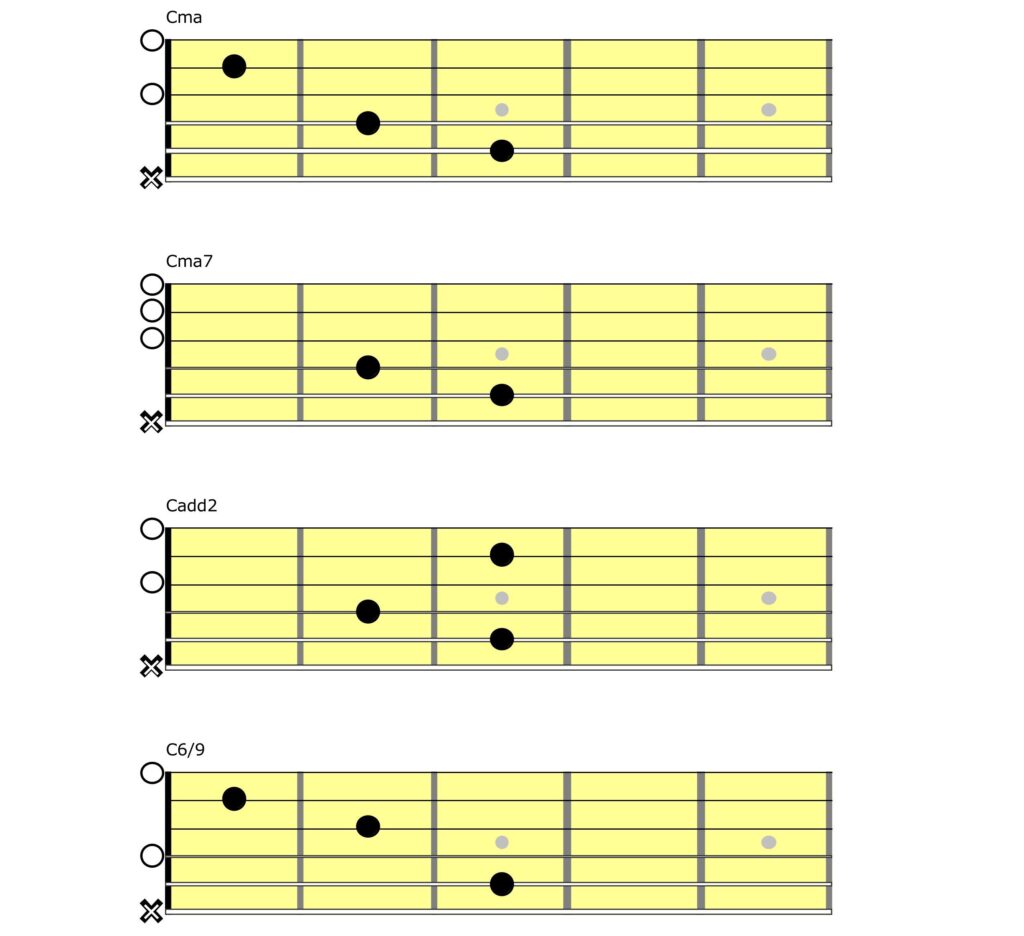
These simple finger movements create melodic shifts within your chords and can sometimes change the harmonic value too … which means your guitar and vocal melodies now have new, exciting resolutions to target within the chords. Not only that, but you are improving the dexterity of your fretting hand!
3. EVEN EXOTIC CHORDS CAN BE EASY
Guitarists use a series of chord and scale shapes to create music. Those standard shapes can sound incredible as is, but what if you want them to sound more “expensive” — you know, like the ones the professionals use?
Playing exotic-sounding chords doesn’t have to be hard. Here are a couple of shapes that give you that “wow” factor … without the “ow” (hurt) factor.
First, shift a D major chord up to the fifth fret and simply lift the second finger off the top string:

This simple two-fingered shape sounds amazing, especially if you arpeggiate the top four strings. What kind of chord is it? It’s a Dmi9, or you could think of it as an Fma7/D. Try replacing a standard Dmi or Fma chord with this instead, and watch your bandmates fist-bump you at rehearsal!
Here’s another top-shelf “fifty-dollar chord”:

To achieve this, play an Fma7 chord at the third fret, put your pinky on the third string, fifth fret, and use the open A string as your bass note. The end result is a very fancy Ami11. Try using this shape instead of a standard Ami or Ami7.
Chord shape alternatives like these can always be used to bring spice and flavor to standard overused chord progressions.
4. FINESSE THE STRINGS
The difference between an average player and a world-class player is that the dynamics, finesse, tonality and musicality are on two completely different levels.
We guitarists pretty much all have the same shapes and tools at our disposal, but we’re talking about the difference between an apprentice and an artisan. The artisan uses experience, skill and finesse to stroke, guide and intentionally place notes with the dynamic precision needed to evoke the ideal emotional response.
If you find yourself strumming away on the chords that you know without giving any thought to the dynamic attack of your rhythms, the clean, articulate placement of your fingers, or the emotional effect your playing may (or may not) have, take the time to record yourself playing.
As you listen back to your performance, adjudicate whether you’d enjoy what you hear if you were a member of the audience.
The key to developing a high level of sophistication is learning how to dynamically spread the downbeat of your chords, practice the light and shade of volume in the picking hand, and the chord-tone resolution of your melodies. (Even practice implementing vibrato on the top note of your chords.) As an apprentice, sure, you want to learn from the master sensei, but you should also understand that you yourself can be your own best teacher. Listen, and advise yourself accordingly.
5. DON’T BE AFRAID TO TURN THE KNOBS
Like everyone else, most guitar players are turned on by the flashing lights, array of dials and bright shiny products that flash across our media screens every day. Of course, we are all looking for the next best thing — or in our case, that one guitar that will be the lightsaber in the darkness — the one device that will promote us to guitar godliness with the tap of a finger.
In some cases, that may be true. New products can bring us enlightenment, inspiration and enhanced musicality, but I’ve also witnessed knob-turning paralysis in many guitar players, too. What I mean by that is the unwillingness to try new settings on the gear they already own. This often leads to contempt for the gear without even trying to get better results.
Amplifiers are pretty simple pieces of equipment, really. If you don’t hear enough bass, maybe try lowering the treble instead … or blend the mids to meet the desired level of bass somewhere in the middle.
I’ve always looked at tone controls as the architectural design of frequencies. The bass is the foundation; it should support the structures above. The mid frequencies add warmth and body, and should cross over somewhere above the bass in a very pleasing way. Treble controls are there to either boost or cut the high frequencies. If your tone is too piercing, reduce the treble so that it sits better on top of the middle ground. If that means your amp knobs are dialed completely off-center, that’s fine. After all, your amp’s tone shouldn’t be based on the symmetry of the rotary dials.
Take the same approach to effects settings, and don’t be afraid to crack the manual open or watch a YouTube video when you get stuck.
6. IF SOMETHING ISN’T WORKING … FIX IT!
Let’s face it, we’ve all had a cable that cuts in and out, a volume or tone pot that “scratches” when we turn it, a pedal we keep using even though we hate how it sounds, or a chord change we “fluff” every time we play it … and yet we never do anything about it!
If any of those things happen to you, it’s time for change. Toss that bad cable snake into the trash. Go to the hardware store and buy some pot cleaner spray and lubricant. Take a photo of the pedal you hate and list it for sale.
Similarly, isolate the chord change that you have problems with. Identify what makes it difficult to pull off, and slowly re-program your fingering. Use visualization to see the change you want to make in your mind’s eye, and your fingers will eventually follow your commands.
7. BE KIND TO YOURSELF
Last but by no means least, it’s important to note that we aren’t machines, and as humans, our performances will fluctuate on a daily basis. Always refer to yourself kindly, knowing that you are always improving, one practice session or gig at a time. I’ve had amazing gigs, and ones that I never want to re-live again. Trust me, beating yourself up won’t fix the notes or the outcome, so just move on and laugh about it over coffee with friends.
When you practice, listen intently, identify problem areas, and make the adjustments needed until you are happy with the results. Practicing mistakes just solidifies the problem, so identify and eradicate them before they become untameable monsters.
THE VIDEO
This video shows both of the excellent Yamaha FG9 models being used in a full-blown production. Listen to how well these acoustic guitars sit in the mix with the other instrumentation and vocals, and take note of how I finesse the strings with my picking hand, use dynamics in each of the song sections, and articulate the single-note melodies with a harmony above the original melody.
THE GUITAR
The FG9 dreadnought is the flagship handmade acoustic guitar in the Yamaha FG family.
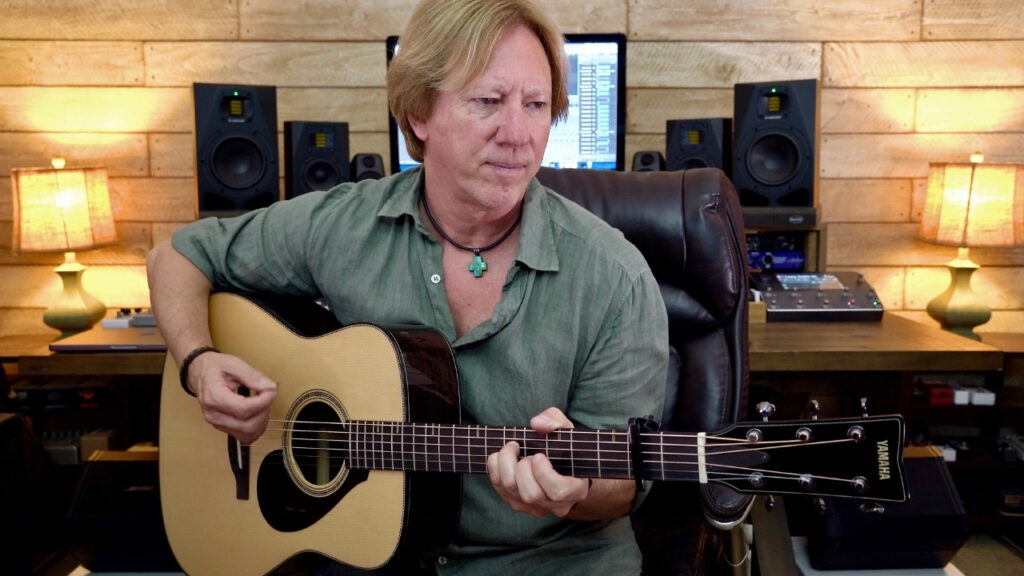
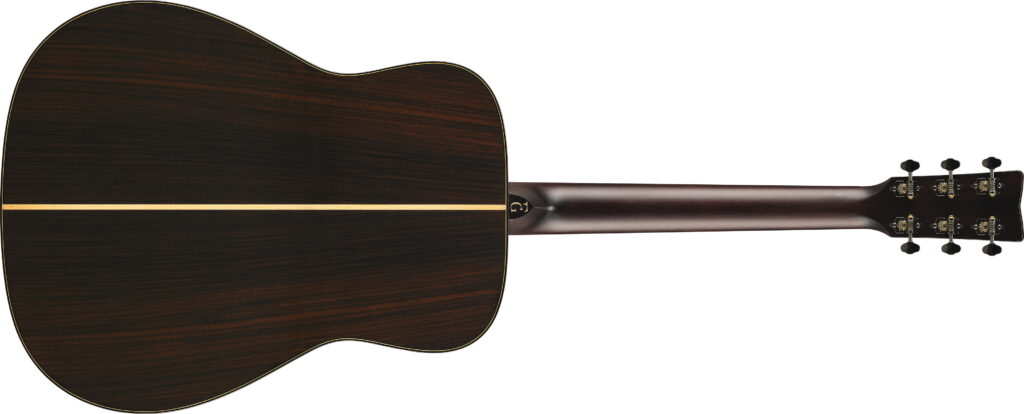
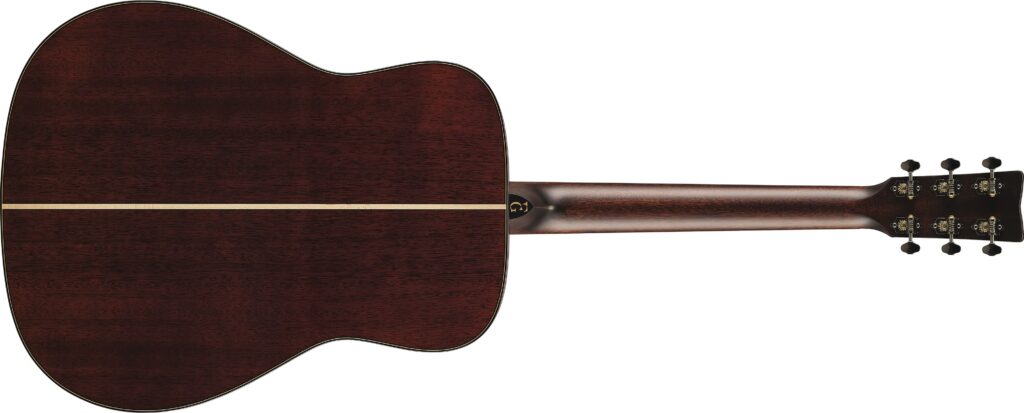
The solid Adirondack spruce top pairs beautifully with either a solid rosewood (FG9 R) or mahogany (FG9 M) back and sides. These guitars resonate beautifully thanks to their internal scalloped bracing, are super light-weight and a dream to play. The FG9 embodies everything a top-notch acoustic guitar should be.
THE WRAP-UP
When we pay attention intently, employ musical discipline and truly love what we do, ascension to the next level of performance happens as a matter of course.
What’s more, the early identification of problems allows you to circumnavigate years of hurdles, and a focused drive towards a destination or desire allows you to climb that mountain one step at a time.










